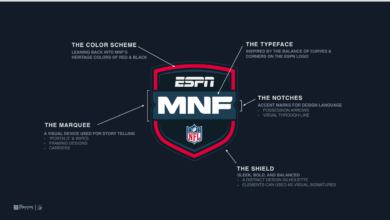List her as “probable”: ESPN injury analyst Stephania Bell works draft on mending knee

(Photos courtesy of Stephania Bell)
ESPN injury analyst Stephania Bell has been in New York the past two days, “sharing my perspective/research on injury-related topics with our production and talent teams covering the NFL Draft.”
Tomorrow and Saturday, she says, “I’ll be on standby in Bristol [Conn.] ready to react to drafting players with injury concerns.”
“Standby” being the operative (pun intended) term for the injured injury analyst who’s spent the past three weeks on crutches following left knee surgery. Who better to explain the injury than the injury analyst herself, minus her Injury Analysis Engine? Bell said her SportsCenter report to viewers on her knee would go something like this:
“This is the type of condition we see when athletes – or at least their joints – age.” Then I would cringe. I would move on quickly to talking about the injury: “Bell had issues of wear and tear where the patella (kneecap) contacts the femur, or thighbone, during movement. The wear pattern is associated with tightness of the tissue on the outer part of the knee. To help alleviate pressure on the back side of the kneecap, Dr. Jeff Dugas performed a procedure called a lateral release, designed to un-tether that tight tissue followed by a microfracture on the contact portion of the thighbone. This was followed by a stem cell injection – harvesting Bell’s own cells via a bone marrow extraction through a needlestick at the pelvis (where a belt would rest) – to promote healing.”
Got that? Well, pictures are easier to understand. See Stephania’s X-ray in the illustration above.

Here’s her description: “This view is used to look at the tracking position of the patella (kneecap). Notice how there is lateral tilting of the patella and narrowing of the space between the patella and femur [arrow]. This is indicative of cartilage loss in that part of the knee.”
OK, to simplify it even more, here’s what her surgeon – Dr. Dugas, a managing partner at Andrews Sports Medicine in Birmingham, Ala. (yes, that Dr. James Andrews) – says:
“Working with athletes is a challenge in some ways, a blessing in others. Stephania is like every other athlete who wants to keep doing their activity but their body, as a result of wear and tear over time, is no longer cooperating. We’re not going to make her knee ‘normal’ through this process, but we are going to return her back to her normal function.”
Bell’s “wear and tear” is pretty impressive.
“I’ve been a runner as long as can remember (Junior Olympics in the 400 and 4×400 relay), but an ankle injury/surgery changed that and influenced my decision to go into PT [physical therapy],” she said. “Ballet, gymnastics, running, squash as a kid, and a recreational athlete as an adult – running, Pilates, weights and martial arts. Ballet was actually one of my more serious endeavors — 20 years of classical training, tested by London’s Royal Academy of Dance Examiners, and at one point considered dancing professionally but knew I wasn’t tall enough (5 feet, 4 inches) to really be elite.”
She says being an injured TV injury analyst is no big deal to her surgery and PT teams in Alabama – her relationship there goes back to her grad school days when she conducted clinical research for her master’s thesis (Princeton undergrad, the University of Miami for her Masters in Physical Therapy) at their facility.
“They don’t treat me any differently, and that includes lecturing me if they I’m overdoing it and not being patient enough,” she said. “They see numerous professional athletes and celebrities, so in the scheme of things I am not particularly impressive. Elite athletes work alongside recreational athletes which is one of the things I love about the clinic.”
While not treated any differently in Alabama, Stephania’s noticed in Bristol.
“Walking around the ESPN campus on crutches draws routine jokes about the ‘injury analyst’ being injured,” she said. “I respond by pointing out that I am willing to go the extra mile to do my research as to what it’s like for the real athletes.”







